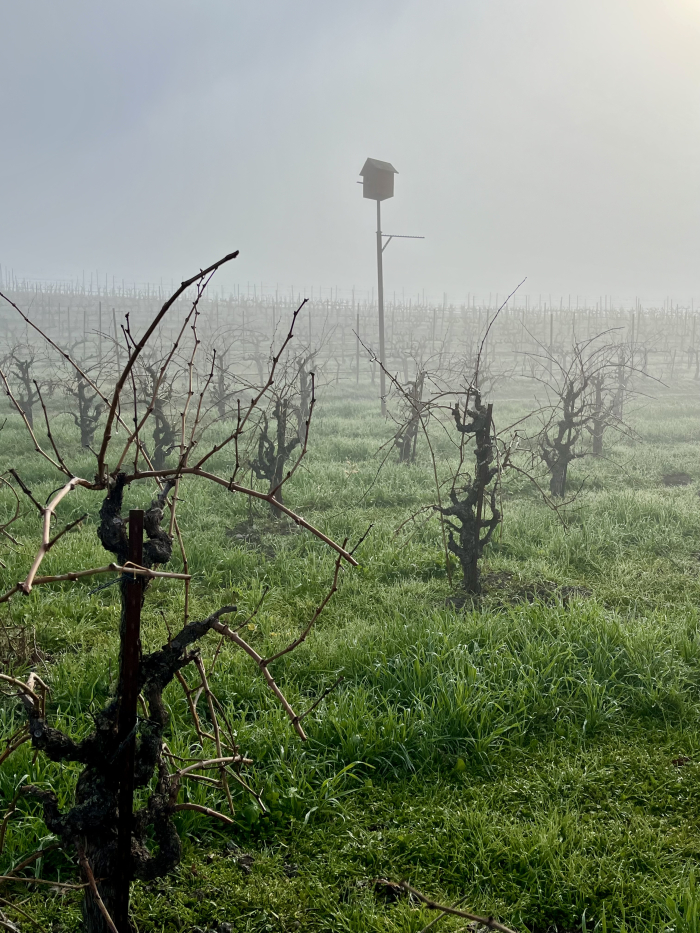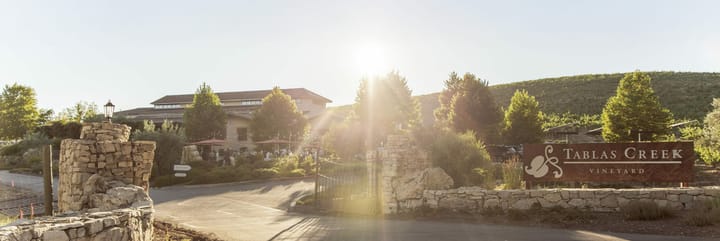Putting the cool, dry start to the 2024-25 winter in context
With the terrible fires in Los Angeles still top of mind around the country, I'm guessing that most of you won't be surprised to hear we've had a dry start to our winter here in Paso Robles too. You might be surprised, though, to hear that Northern California regions like Napa and Sonoma are well above their normal rainfall to date. This is as a result of several atmospheric river storms that hit the Bay Area and north starting in late November, while leaving the Central Coast mostly dry and Southern California entirely so. My favorite California weather expert Daniel Swain explained in a post on Bluesky just before the fires broke out:
A major offshore wind & fire weather event will develop this week across much of Southern California. Essentially no rain has fallen so far this season in SoCal, and a high-end "atmospheric blowdryer" wind event will greatly increase wildfire risk by Tue/Wed. #CAwx #CAfire [1/3]
[image or embed]@weatherwest.bsky.socialJanuary 4, 2025 at 3:48 PM
https://embed.bsky.app/static/embed.js
The net result of this wet-in-the-north, dry-in-the-south pattern has been that we're only at about 35% of normal rainfall. But if you drive around town -- or around our vineyard -- it doesn't feel like we're particularly dry. The rain came at the ideal moment, just after we got our cover crop in the ground, and an unusually sunny and warm December meant that the seeds sprouted and grew rapidly. In fact, it's greener here now than it was in mid-January 2023 and 2024, both winters where we got above-average rainfall. This photo of the Mourvedre block behind the winery that I took this morning will give you a sense:
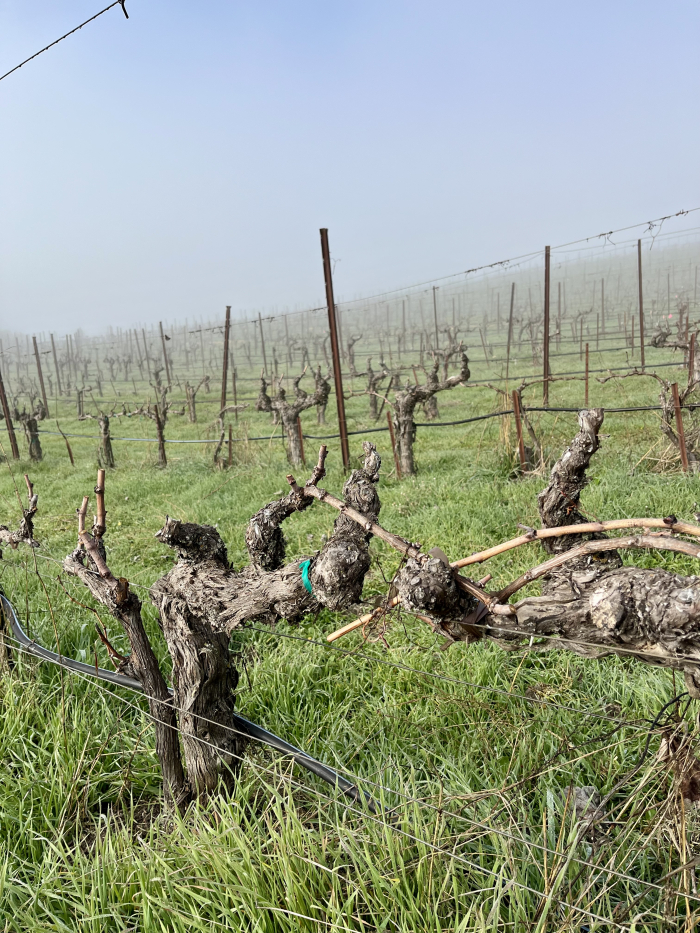
While December was comparatively mild (average high 66°F, average low 38°F, and only two frost nights), since the calendar flipped to January our nights have gotten colder. In the first 19 days of the month we've had the same average high of 66°F but have seen an average low of 32°F and racked up 10 frost nights. Before you worry, winter frosts here aren't unusual. We typically get 30-40 nights a year that drop below freezing, and grapevines benefit from being forced into dormancy.
But it is unusual to see so many frost nights in a single month, and even more unusual for so many of those days to be warm. Last Wednesday, we had a day that dropped down to 28°F and then rose to 71°F that afternoon. That's a 43°F swing! We'd expect a diurnal temperature variation like that in November, before it has rained and when our humidity is typically at its annual low. But not usually in January, and not usually when you have all that green growth and the moisture it both necessitates and retains. The result has been frosty mornings and then afternoons with deep blue skies and not a cloud to be found. We've been taking advantage of this weather to get ahead on our pruning. One of our goals this winter was to prune our entire vineyard with our full-time team and not need to bring in any supplemental crew. So far, we're ahead of pace and roughly halfway done. You can see the progress and the crazy blue of the skies in the two photos below. On the left is an unpruned Grenache vine. On the right are two newly pruned Mourvedre vines:
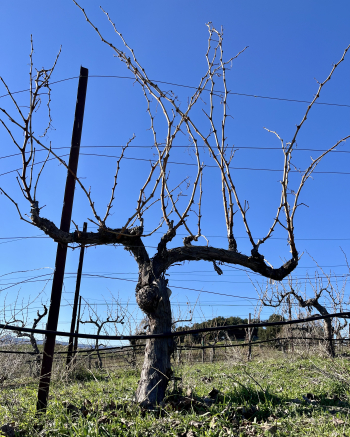
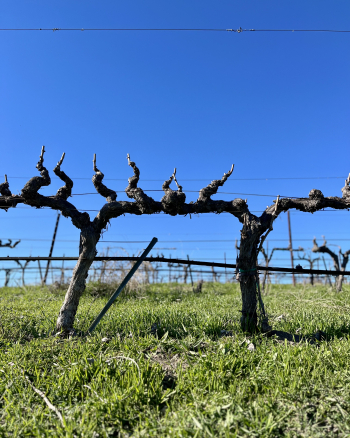
The early rain and the sunny weather has also been great for our flock of sheep. There has been plenty for them to eat and we've been able to keep them in the vineyard instead of having to pull them out because we were worried about soil compaction:
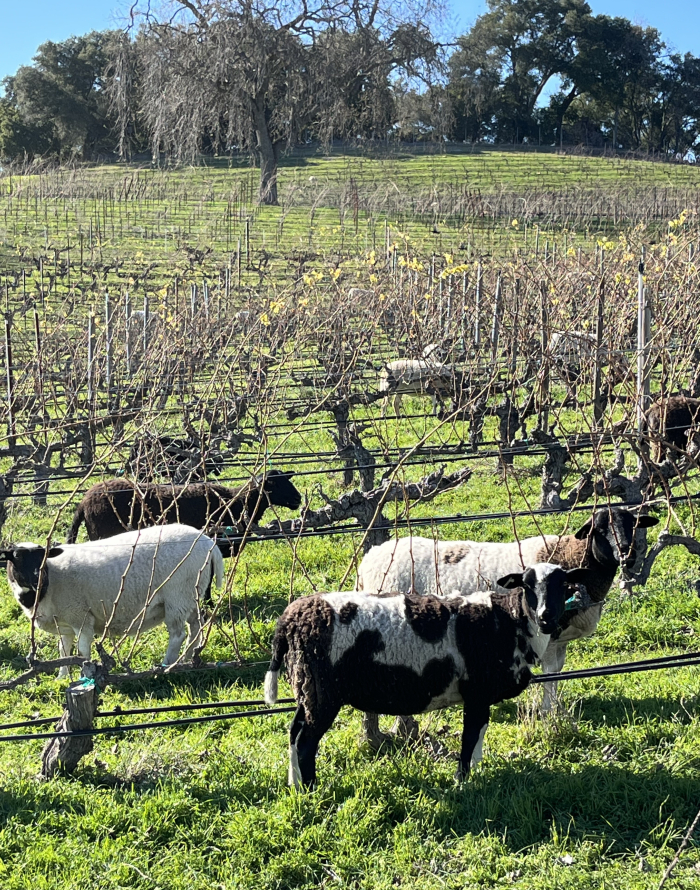
The sheep are shedding, leaving wool on the vines as they rub against them while passing through the block. Each spring, we find birds' nests made from this wool. Sounds cozy!
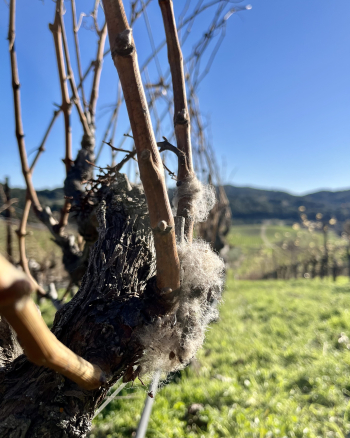
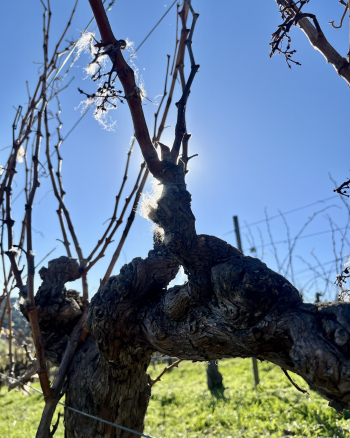
The impact on the vineyard is likely to depend on what we see in coming weeks and months. Typically at this point we'd expect to have accumulated 11.45" of rain, or about 45% of what we'd expect in a normal winter. Looking at it another way, we're about 8" of rain behind what we'd expect to have at this moment, with about 14" more of rain expected between now and the end of the winter.
Winter rainfall typically has three critical impacts on our operations:
- First, to sprout and sustain the cover crop, allowing us to build organic matter in our topsoil and create a healthy network of microbial and fungal activity.
- Second, to saturate the deeper soil layers, from which our grapevine roots will draw water later in the growing season when the topsoil has dried out.
- Third, to replenish the wells and aquifers.
Looking need by need, we're fine on the first concern. The rain we've gotten so far was timed perfectly from a cover crop and topsoil standpoint, and because of the sun, we're seeing plenty of growth. The second concern is the most pressing. While the top few feet of soil has benefited from our rain, deeper layers are still dry. As for the third concern, our aquifers and wells, you might think that this would be our biggest worry, but it's not. Our wells are in good shape thanks to the last two wet winters. That said, they haven't yet benefited from this year's rain. Las Tablas Creek has not yet flowed. And the aquifers will be important to 2026 and beyond.
Happily, for the first time in nearly a month, the forecast is calling for some wet weather, with a storm system are forecast to impact the Central Coast toward the end of this week. The other weather expert I consider a must-follow for the Central Coast is John Lindsey, and he shared a hopeful post a few days ago that is now starting to show up in mainstream weather forecasts:
The weather models have occasionally suggested cutoff lows bringing rain to the Central Coast since late December, only for those predictions to be removed in subsequent model updates. The current 18Z projection features a 996-millibar parent low-pressure system off the Oregon… pic.twitter.com/vgvBODEbSk
— John Lindsey (@PGE_John) January 16, 2025
https://platform.twitter.com/widgets.js
We hope he's right. Meanwhile, we'll be enjoying the winter beauty, both the chilly mornings and the sunny afternoons. Fingers crossed, please, everyone.
